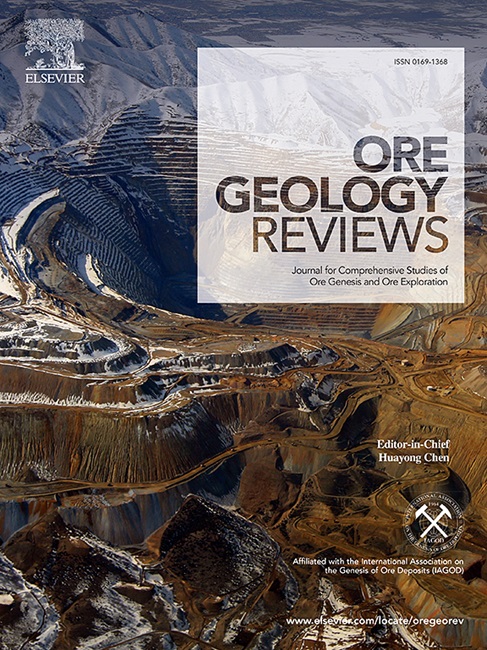The Lengshuikeng porphyry type Ag-Pb-Zn-Cd deposit: Insights from magmatism-mineralization timing sequence, chemical composition and in-situ Pb isotope of sulfide
IF 3.2
2区 地球科学
Q1 GEOLOGY
引用次数: 0
Abstract
The Lengshuikeng deposit is a significant Ag-Pb-Zn-Cd deposits in the Gan-Hang Tectonic Belt (GHTB). Understanding its genesis is crucial for revealing the relationship between the tectonic evolution and the mineralization in this region. However, the metallogenesis of the Lengshuikeng deposit has remained unclear. To address this issue, a systematic analysis of chronological data, mineralogy, lithology, chemistry of sphalerite, and in-situ Pb isotope of the sulfides from the Lengshuikeng deposit are conducted to explore the relationship between magmatism and mineralization, metal sources, and ore-forming feature. The magmatism consists of two major stages: the Late Jurassic (Daguding Formation and a large scale of granite porphyry) and the Early Cretaceous (E’huling Formation and minor acid dyke). The mineralization age is restricted near 155 Ma, which is in keeping with the granite porphyry (158.0 ± 1.0–154.3 ± 3.0 Ma). The sulfides in the major stage (Gn-Sp(−Aca)-Py) (208Pb/204Pb: 38.07–38.44, 207Pb/204Pb: 15.48–15.62, 206Pb/204Pb: 17.68–17.90, 238U/204Pb (μ): 9.32–9.58, 232U/204Pb (ω): 38.06–40.16) exhibit consistent Pb isotopes with most of the granite porphyry and minor crystal tuff, which indicates that the metals primarily came from the granite porphyry. The crystal temperature of sphalerite is focused on 300–350°C. In consideration of C, H, and O isotopes in previous works, the hydrothermal fluid was primarily derived from the granite porphyry at a high temperature stage. Combined with the trace elements of sphalerite (relatively high Cu, Fe, In, Cd, low Ge and Mn) and the genesis diagrams (based on In, Ga, Ge, Fe, Cd, and Mn), this deposit is classified as a porphyry type deposit. Geochemical data, Nd isotopes in previous works and in-situ Pb isotopes (△β-△γ; V1-V2) from this research suggest that the granite porphyry and crystal tuff mainly emplaced by partial melting of the Neoproterozoic basement in compressive setting at the GHTB, resulting from the subduction of the Pacific Plate to the South China Craton. A comprehensive metallogenic model is defined, involving the tectonic setting, the genesis of granite porphyry, ore-controlling factors, and the mineralization process.

求助全文
约1分钟内获得全文
求助全文
来源期刊

Ore Geology Reviews
地学-地质学
CiteScore
6.50
自引率
27.30%
发文量
546
审稿时长
22.9 weeks
期刊介绍:
Ore Geology Reviews aims to familiarize all earth scientists with recent advances in a number of interconnected disciplines related to the study of, and search for, ore deposits. The reviews range from brief to longer contributions, but the journal preferentially publishes manuscripts that fill the niche between the commonly shorter journal articles and the comprehensive book coverages, and thus has a special appeal to many authors and readers.
 求助内容:
求助内容: 应助结果提醒方式:
应助结果提醒方式:


